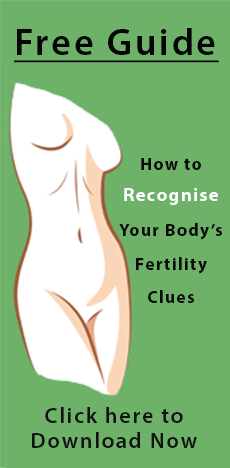Previous page of Bleedin Woman
Bleedin’ Woman Part 4 –
Modernist Advertising and the Modern Woman.
The end of the Victorian era and the nineteenth century marked also the beginning of the first wave of the women’s liberation movement. Thereafter advertising that claimed to be “frank” about menstruation for “enlightened women” of the “modern” age (Marvel advertisement, 1928, http://www.mum.org) was increasingly directed at women as some (generally, the wealthy) were now learning to read and write in western countries such as England, U.S.A, Canada and Australia.
Despite the advent of new menstrual products such as sanitary belts and disposable cotton pads women remained highly uninformed about the functions of their bodies.
Representations of women in the advertisements of this time were continuously overtly sexist and indicative of women’s submission to men, again featuring no useful or factual information only claims by medical authority to give credibility to a product. Many offered an information booklet that would be sent to the reader in a plain envelope after sending a coupon. As in the previous century it was products concerned with ‘correcting’ the female disposition such as disinfectants and antiseptics not absorbent products to soak up blood flow that were widely marketed.
With names such as Sterizol (alluding to sterilisation), liquid products were advertised with the intent to cleanse, disinfect and sterilise a woman’s vagina.
A 1928 advertisement for Lysol (Lysol advertisement, 1928, http://www.mum.org) featured a wealthy family, where the well-dressed parents are going out to socialise while leaving their young son with their uniformed housemaid. The wealthy are set out as role models for everyone else. If wealthy women used Lysol then poorer women would realise that it must be effective, credible and necessary.
The rhetoric of the advertisement not only places the woman in a context of class but also of subordination to her husband to the point where she is in fear of being ‘dirty’ because she is no longer the virgin she was when first married. The woman in the advertisement is “still the girl he married” remaining virginal and pure because “during the years following her marriage, she has protected her zest for living, her health and youthfulness, and ‘stayed young with him’ by the correct practice of feminine hygiene”.
A personal hygiene spray advertisement (Marvel advertisement, 1928, http://www.mum.org) explained that “To the enlightened modern woman, feminine hygiene and personal daintiness are subjects of infinite importance” and “they are inseparably interwoven with woman’s health, activity, happiness and charm.” Again a link is made between menstruation and mental health.
Largely as a result of war tampons were invented in the mid-1930s. Priests (again male by default) in the Catholic Church denounced the use of tampons immediately, worrying that women would find them erotic and lose their virginity upon insertion(Houppert K, 1997, http://critpath.org/~tracy/village.html). In retrospect it seems that concern was actually that women may examine their vaginas and learn something or question the knowledge they were given by men.
Tampons were marketed as necessary to those required in the workforce while men were away at battle. An early Tampax advertisement (Tampax advertisement, c.1938 in McQuiston 1997, p.73) states “In a man’s job there’s no time for ‘not so good days'” and “a man’s job doesn’t allow for feminine disabilities” reiterating the knowledge of menstruation as a disability. Luckily, tampons were able to combat disability, “com[ing] to the rescue of thousands of women on service”. In marketing it’s product the advertisement applies a new guilt to the female consciousness, claiming that “War work won’t wait’.” and that Tampax tampons give “assured effectiveness in action”.
Although it is more explicit in it’s depiction of tampons than most advertising of it’s time showing the box and what appears to be the applicator for inserting the tampon, it fails to mention what exactly a tampon actually is, only that it is “worn internally”.
Tablets for the relief of period pain were another remarkable invention of this time which despite their effectiveness, still patronised and condemned women through their advertising. One advertisement (Midol advertisement, 1938 on http://www.mum.org) declares hopelessness and despair for women when menstruating “The calendar said “Give in” Midol said “Go on!”
It also employed medical authority; “Doctors have discovered that severe or prolonged periodic functional pain is not natural to most women”. With the proclamation that menstrual pain was unnatural “in all but unusual circumstances” women were again left in fear that there was something ‘wrong’ with their bodies.
During the 1950’s several manufacturers of menstrual products produced booklets such as “Are you in the know?” (Kotex, 1956) and “What women want to know” (Midol, 1959). These signified the corporate commodification of knowledge about women’s bodies; manufacturers of menstrual products taking over from medical texts informing now highly literate females. Unfortunately these were little more than advertisements giving minimal information, only a brand name as the answer to any questions about menstruation. They gave other advice too, such as how to get along with boys, touching a weak spot in every girl. “Getting okayed by the ladies first – leads to meeting the boy-people” (Kotex,1956). Blatantly promoting a desire to be accepted in high school was a subtle message from the corporate world promoting product market domination through conformity. Menstruation is only referred to subtly as “this’n’that” whereas the other topics covered by the booklet are all quite specific.
“What women want to know” (Midol, 1959) claimed to be “A complete and frank exposition of womanhood’s greatest physical problem, illustrated throughout, with advice on prevention and relief.” In all it’s frankness in explaining feminine hygiene it manages not to mention the words vagina or blood anywhere.
On to next page – Postmodern products, knowledges and advertising

